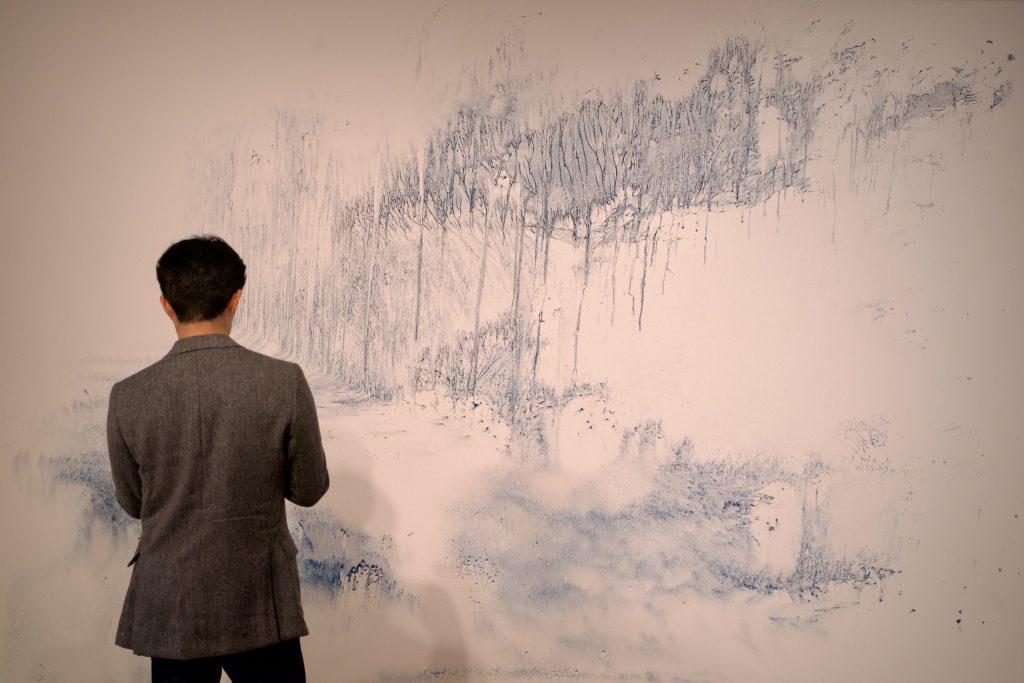
Makoto Fujimura’s artistry features Japanese techniques, incorporates religious elements and displays a message of resilience amid devastation. The “Water Flames” exhibit finds Fujimura investigating the trauma he has endured, turning it into magical paintings of triumph and color — currently on display in the Weisman Museum.
Survival and Recovery Through Art
A few of Fujimura’s works are on display for the first time, including “Water Flames – Vermillion,” finished in 2006, after the 9/11 attacks in 2001, which Fujimura survived as a passenger on the subway directly under the World Trade Center towers as they collapsed.
“Almost all the paintings in this exhibit have to do with this reality of facing Ground Zero and having been traumatized by violence but choosing to move into those images until those flames of destruction became flames of sanctification,” Fujimura said.
Two of Fujimura’s paintings — “Vermillion” and “Doe of the Dawn” — created of the rich red, Japanese material vermillion, are on display in the first room of the Weisman Museum. “Vermillion,” inspired by the fiery event of 9/11, showcases the incomparable devastation of the attack and contrasts against the cool blue of “Walking on Water — Forest,” made of pulverized azurite and malachite.
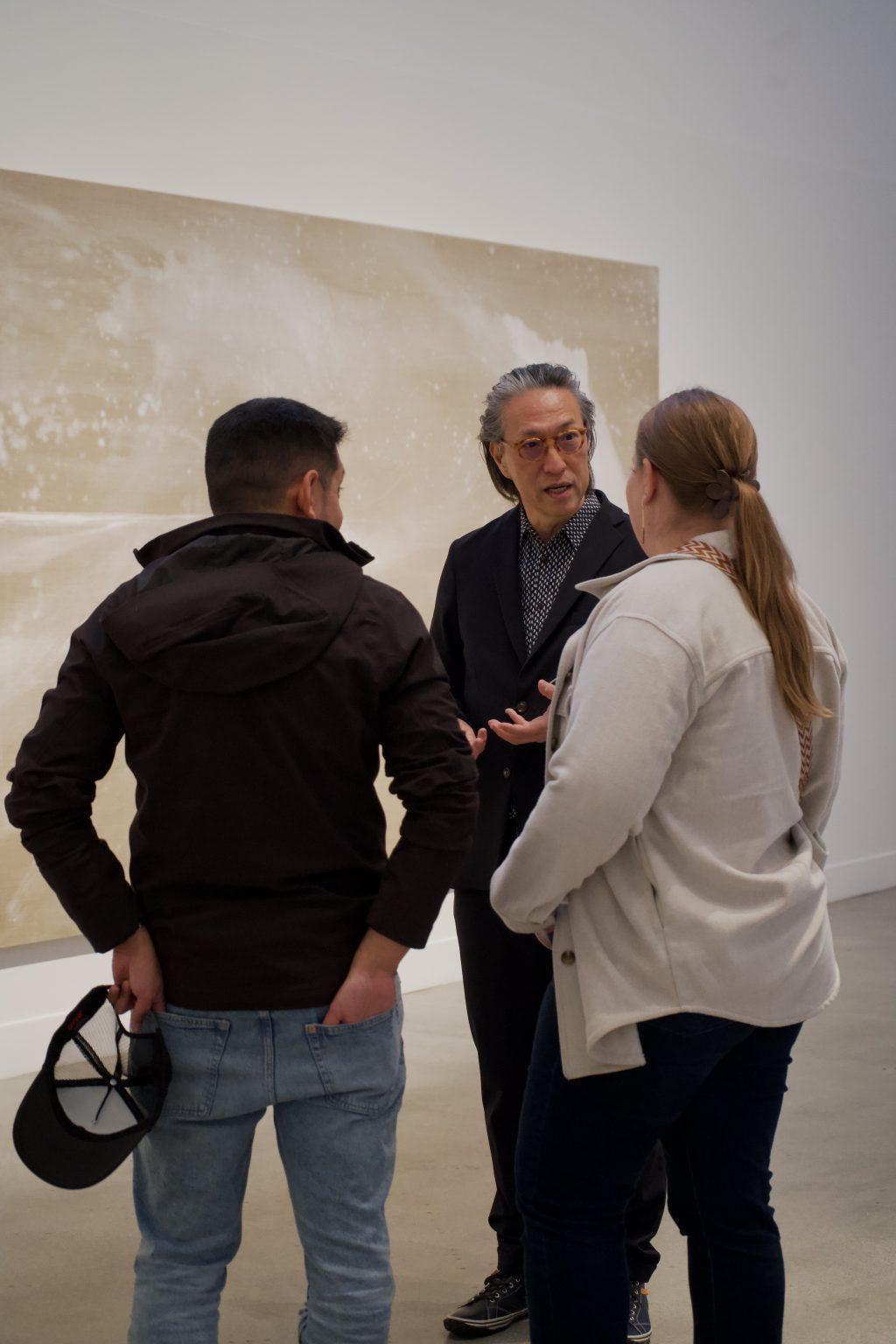
“Golden Flames” is reminiscent of the persistent ember of a once-active flare, creating the feeling of standing on the ashes of endured anguish — burning but remaining unscathed.
“I chose to create the future — not running away from it but being aware of what I am standing on,” Fujimura said.
Nihonga
Fujimura incorporates the unique technique of “nihonga,” a meticulous painting approach that dates back to 16th and 17th century Japan, according to Namora Kakejiku. This complex process is a slow art in itself, even before it hits a canvas, requiring natural pigments, powdered minerals and a unique fixing of animal hide glue.
The technique of nihonga is temperamental, Fujimura said. Many circumstances and unique specificities are vital for the finished artwork, including weather, location and time of day.
Furthermore, nihonga is an artistic style that aligns with the process-driven way Fujimura said he lives his life.
“I am intentionally able to find myself,” Fujimura said.
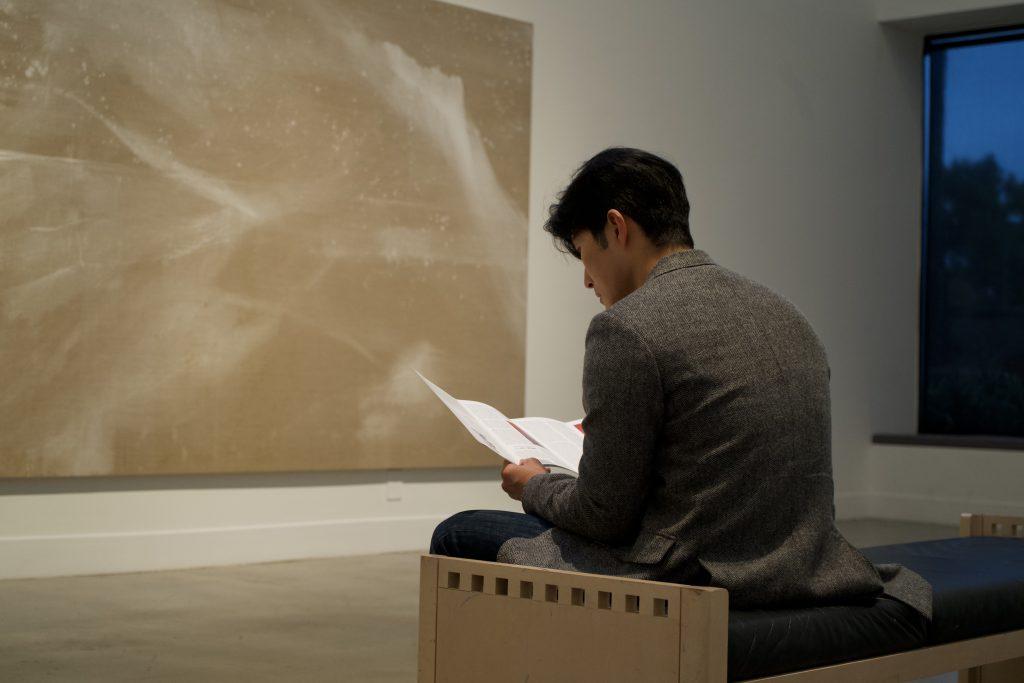
Nihonga allows the artist, depending on the treatment, to manipulate the opacity and transparency at the same time as the colors, creating an electric spectrum of hues, Fujimura said.
Overall, the technique of nihonga is a slow art — a painstakingly arduous process that allows Fujimura to get into the headspace necessary to create his artwork, which requires significant personal thought and contemplation.
The same degree of thought is necessary from his audience as well.
Andrea Gyorody, the curator for the Weisman Museum, said, “Their [Makoto Fujimura and Jeni Spota C.‘s] bodies of work equally demand sustained, attentive viewing.”
Fujimura recommends standing in front of his artwork for 10-20 minutes to see the complexity and explore the 100+ layers he included in his works, he said. The several layers of the paintings allow his audience to investigate the immense depth of endured trauma which inspired his art.
“The Fire and the Rose Are One”
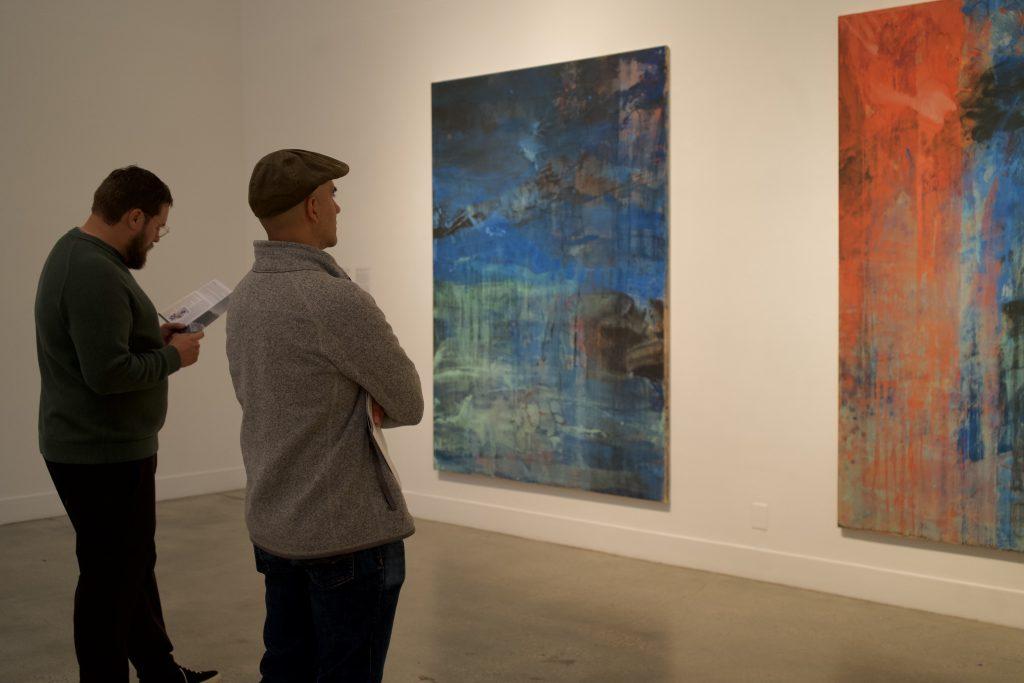
From afar, “The Fire and the Rose Are One” appears to be a small explosion of colors, and as one draws near to the canvas, the evocative nature of a fiery gentleness consumes the eye.
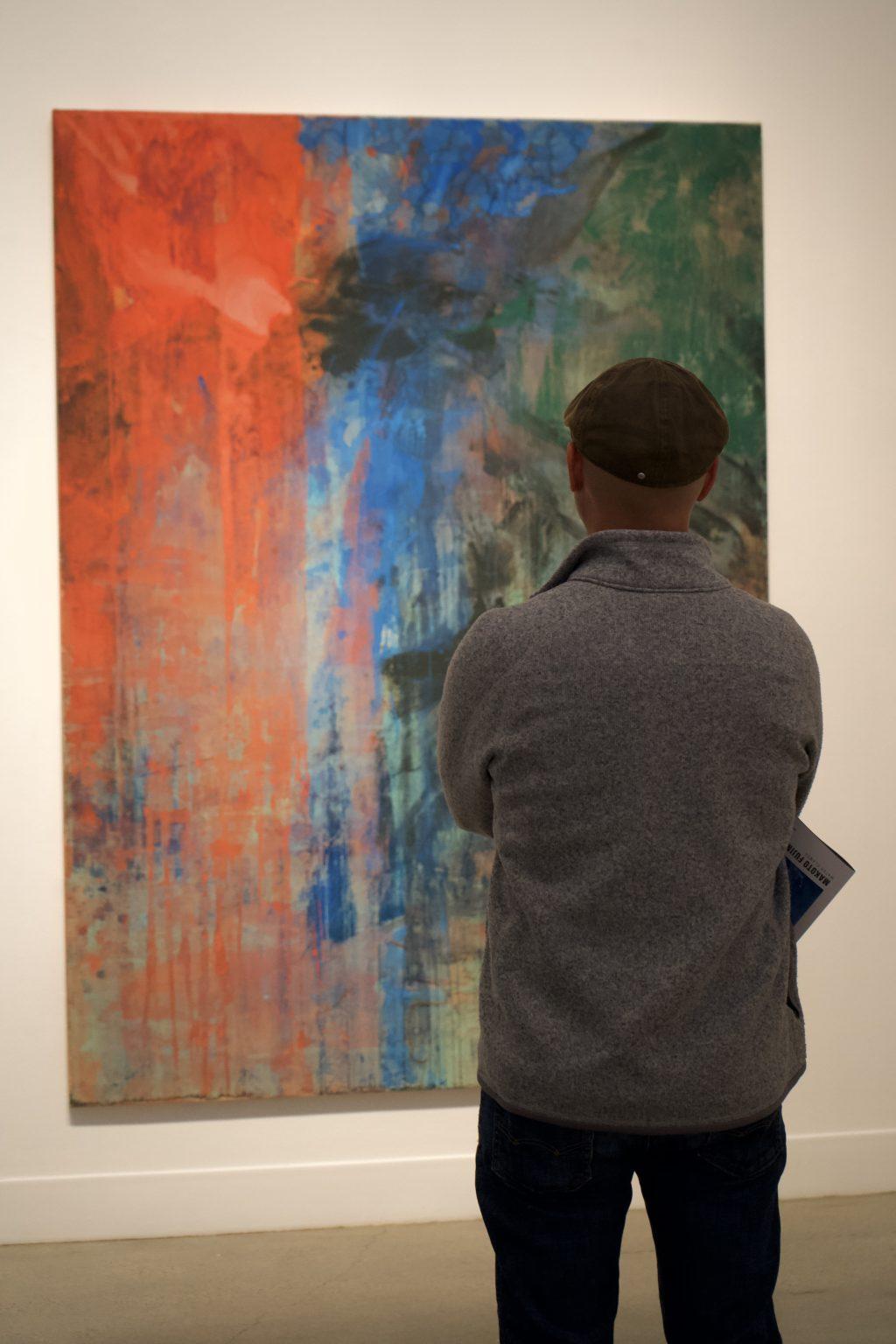
Fujimura uses “Kumohada“ paper, translating to “cloud” in English and made of hemp and mulberry fibers entwined to create a cloud-like surface, he said.
During his keynote speech held Jan. 19, Fujimura discussed the making of his monumental triptych “Sea Beyond,” deriving inspiration from the Pacific Ocean while in Newport Beach and utilizing a rare and intricate mode of pulverized sea oysters to create a unique hue of white that mesmerizes the eye.
“Sea Beyond”
“The painting [“Sea Beyond”] is stunning. I had to stand on the other side of the room to actually take it all in,” sophomore Elizabeth Stansberry said. “You feel a little more involved in the painting because you know what he was feeling as he was making it.”
As Fujimura was completing the massive 33-foot-wide painting, he received word of the unsuspected passing of his mother who was suffering from dementia.
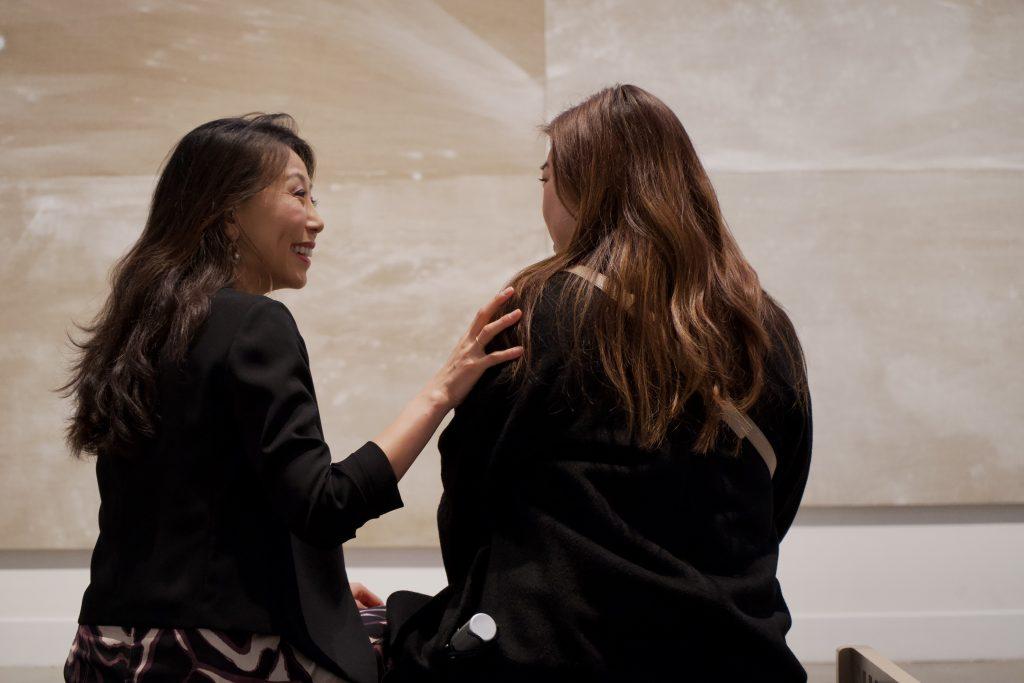
“I went to the beach and prayed, looking out at the horizon,” Fujimura said. “I decided to ask what was beyond the horizon.”
Fujimura was surprised to find out what physically lies beyond the horizon after a simple Google search — a beach his mother would take him to in Japan, across the Pacific where he sat in California, relishing memories of playing in the sand and making art with sea shells.
This bittersweet sentiment makes “Sea Beyond” a full-circle moment for Fujimura — a moment he discusses in his book, “Art + Faith.”
“As usual, my intuition was way ahead of me, Fujimura said. “I had been painting an elegy to my mother even before she had passed,”
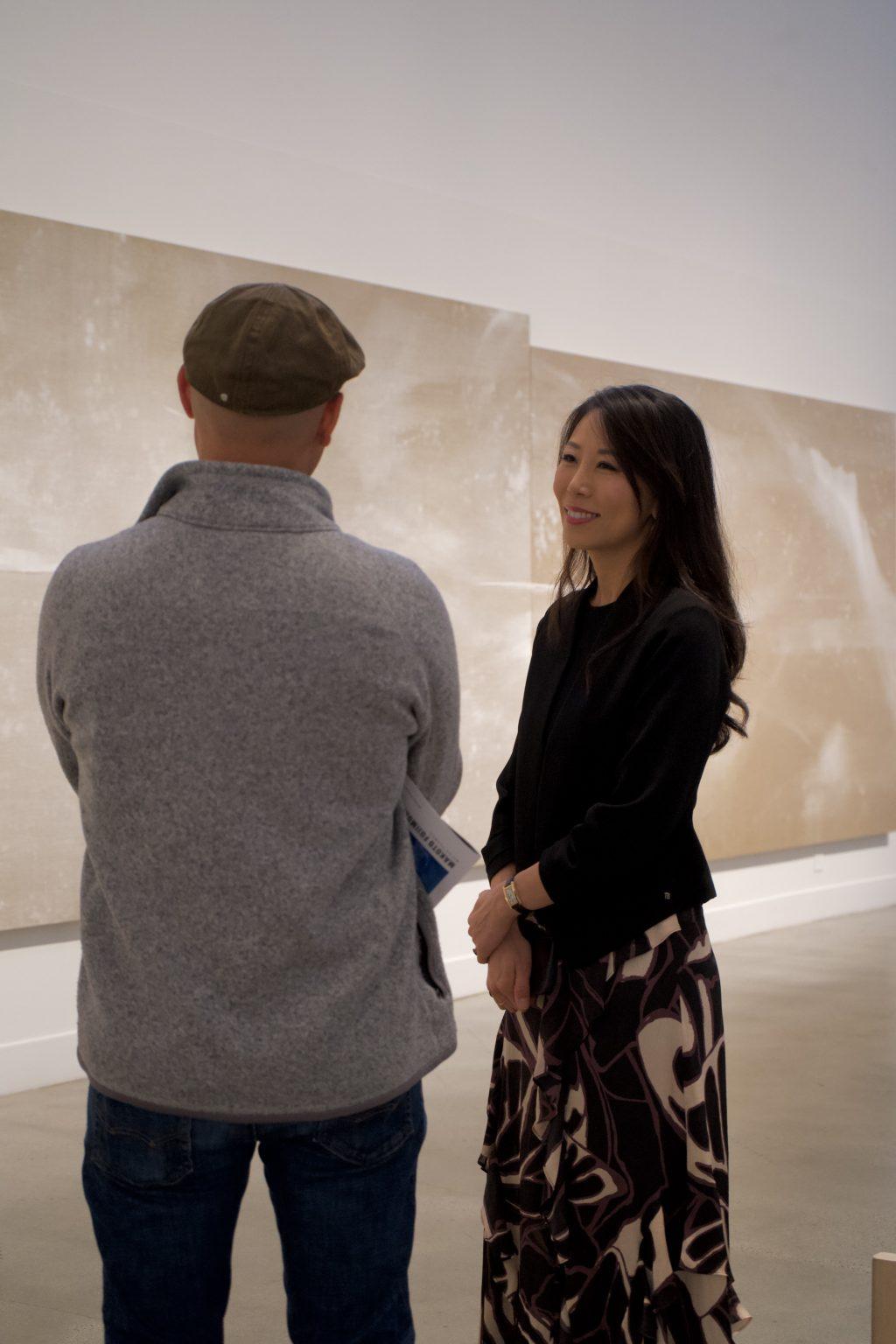
Furthermore, the practice of slow art teaches patience which is much needed when enduring significant trauma, Fujimura said. There is no rush to healing, much like there is no rush to creating a plethora of layers that become a vibrant painting that embodies a luxurious gemstone on canvas.
“My art is a portal into that journey of brokenness to new creation,” Fujimura said. “I hope it will provide healing to people who are also on that journey.”
Fujimura channeled his devastation into magnificent pieces that are now on display until March 31.
______________________________________
Follow the Graphic on X: @PeppGraphic
Contact Ivan Vicente Manriquez via email: ivan.manriquez@pepperdine.edu

